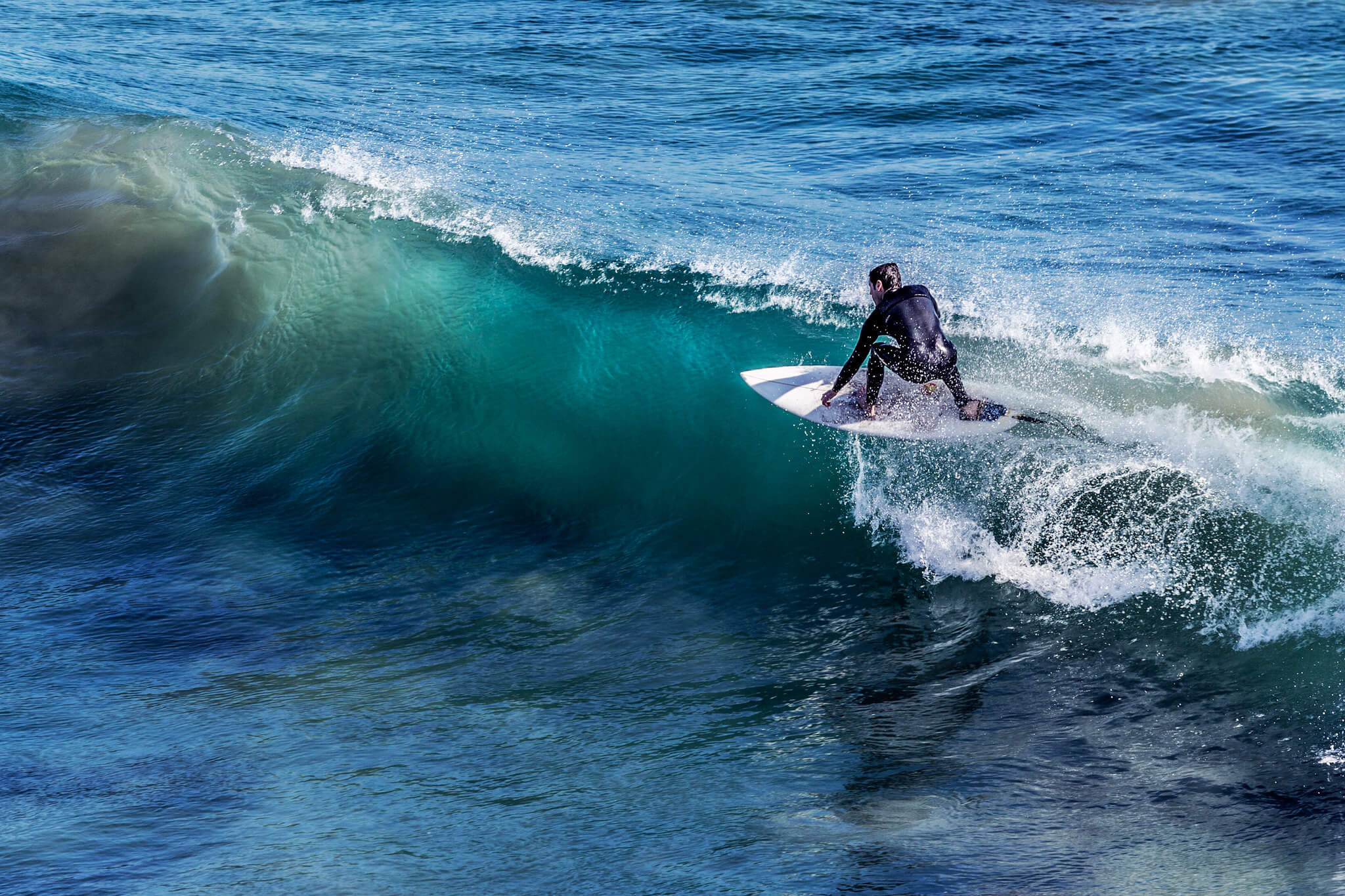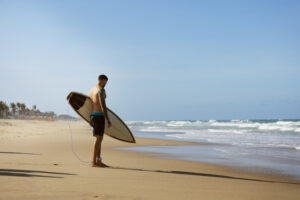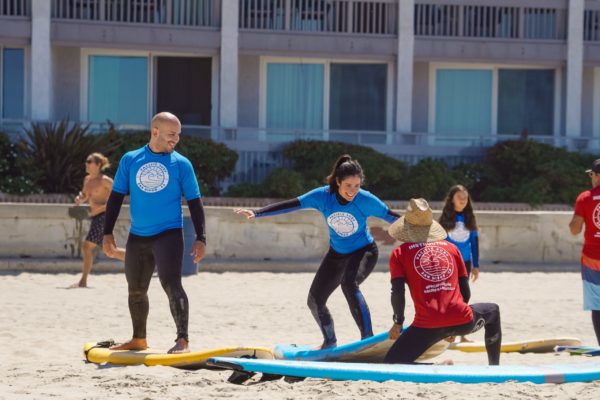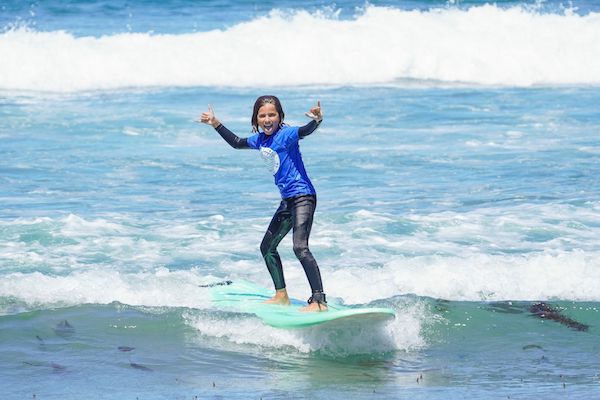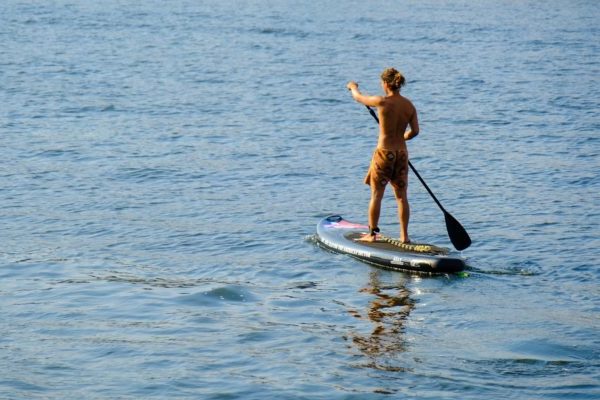It might seem counterintuitive given the free-spirited nature of surf culture, but the water isn’t a free-for-all, ruled by the dude that can paddle the fastest. There’s actually a strict, standardized set of rules to follow similar to the rules of the road. These rules are in place to avoid injury, death, and general douchebaggery. Following them will be essential to avoiding trouble both in the water and on the sand.
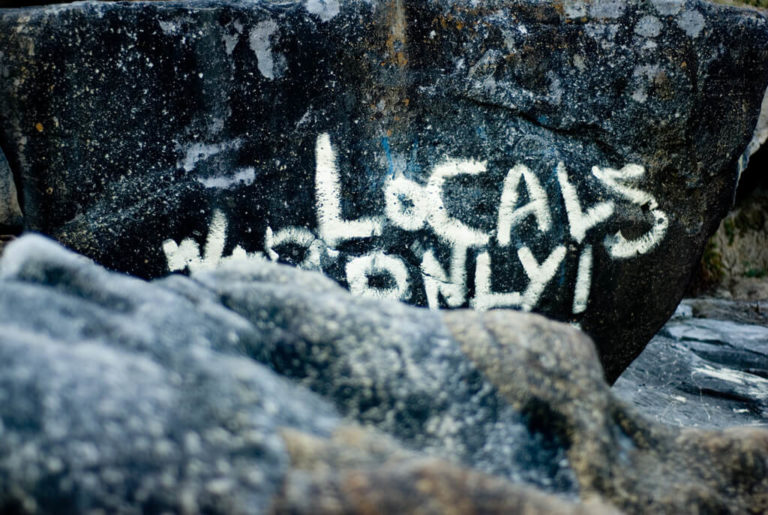
Andrew Beeston / Flickr
Beware of the Locals
Before a beginner even steps out onto the sand, there’s one thing they need to know. Locals dominate their beaches. They demand respect, and oftentimes, they don’t want anyone else paddling out onto the water. They might not say something if you show up, but they might sneak off, slash your tires, break your board, or wreak havoc in some other way. If you paddle out and cut them off, there could be a fight. They could also race for the waves one by one, refusing to let you have your turn.
Not all beaches are like this. Some beaches, like the one pictured above, will have signs—usually graffiti or a makeshift post; others, like Venice Beach in LA, have a reputation. They’re known as locals only beaches. Know the area before you go, and if you feel unwelcome, it’s probably best to leave.
There are a number of reasons these kinds of things can happen; some of them make sense, and some of them don’t. Many surfers come from multi-generational families. They would all learn on the same beach where their best memories were made, and they’ve watched over the years as tourists and outsiders invaded their sands.
These are people who live on the beach. It’s their home away from home. It’s what many would consider their personal space. Now they can’t even catch a good wave because there’s dozens of newbies paddling out every few minutes. To surfers, that’s unacceptable. Their morning surf is like their cup of coffee. In the afternoon, it’s their way to wind down after work. They can’t miss it, and they won’t.
Localism isn’t always pretty. Sometimes it can turn the sand into a prison yard, where only certain people are allowed. It won’t always be fair. But we have to respect it. There are a lot of things that could go wrong. Don’t act hard. Be smart.
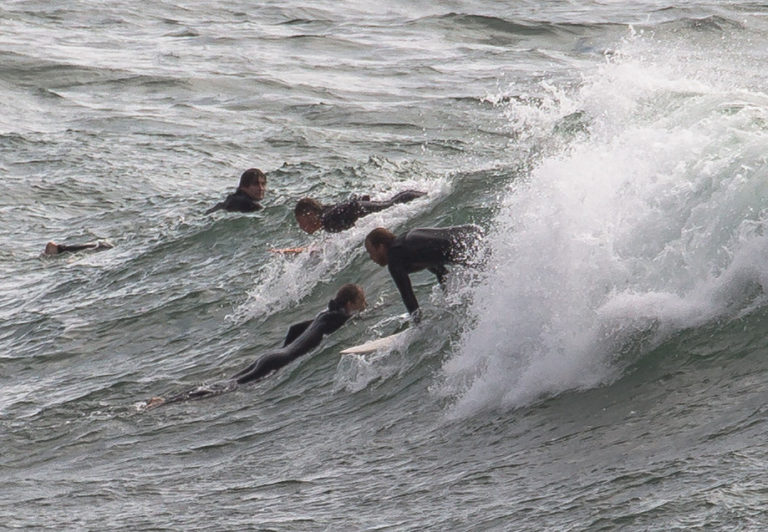
j.lau88 / Flickr
Learn the Right of Way
Just like when you stop at a four-way intersection, surfers observe the right of way to decide whose turn it is to ride a wave. This is sometimes known as wave priority. There’s a basic system that is easy to learn, but it’s important to remember that not everyone is going to follow it.
People get impatient. Maybe they’ve been waiting in traffic after work, struggling to get to the beach, only to find half the neighborhood suited up and paddling out. In that case, they’ll only have one chance to ride. Know to expect that mindset and adapt to it. Be the guy that’s slow to jump out, and you’ll be able to avoid accidents before they happen.
Right of way is simple. The person who is furthest out, closest to the breaking wave, and has been waiting the longest, gets the wave. If they don’t catch it, then it belongs to the person who is closest to the peak of the breaking wave. If two surfers are in line for it, and it’s unclear who’s turn it is, then the wave belongs to the person who gets to their feet first. This is the only time first come first serve really applies, and it’s important to remember that.
If the wave is breaking left and right, which is rare on some beaches, surfers will yell out which direction they’re taking. Respect their call and remember all of the rest of the rules still apply.
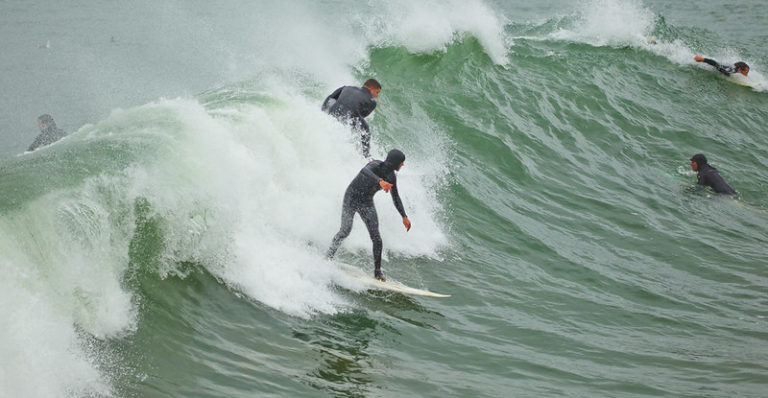
j.lau88 / Flickr
No Dropping In
As with all forms of etiquette, there are faux pas that are never committed. Dropping in is the surfer’s faux pas, and it is highly irritating, not to mention dangerous. Imagine you’ve been wading in the water, moving through a never-ending lineup of surfers, and you finally catch your wave. You stand up, and someone comes rushing down in front of you blocking your path. You could wipe out, accidentally bash into the person in front of you—any number of things could happen. Wait your turn. Never rush in or try to get in front of someone else. This is one rule you simply have to follow.
Don’t Hog the Waves
Even if you can paddle out, get to the head of the lineup, and catch the wave every time it doesn’t mean you should. Other people will notice what you’re doing, and they’ll probably start dropping in all at once, causing collisions and wipeouts. It’s better to share the water.
Don’t Paddle Out in Front of Everyone
When you paddle out, look at the way the waves are crashing, where surfers are riding, and go around. If you don’t, you could end up hurting yourself or somebody else. This is just as bad as dropping in, and it’s a great way to get yourself into trouble, because it makes you look like you don’t know what you’re doing.
Have Fun
Day-to-day surfing isn’t a competition. It’s a relaxing way to spend a morning or afternoon. If you’re just thinking about how much you hate waiting your turn, or how you’ll never catch a wave, you’re not going to have any fun. The best way to handle things is to learn the rules, try out surfing lessons, and practice patience. You’ll get your turn, and it will be spectacular.

